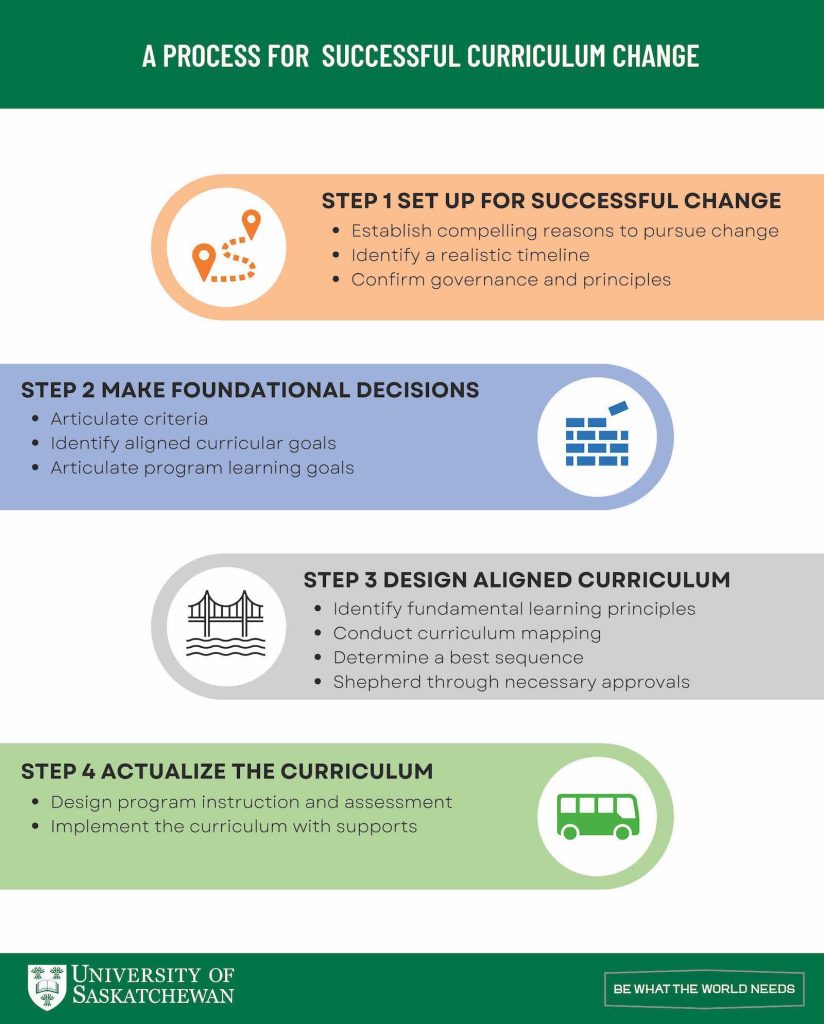Introduction
4-Step Renewal Process
The 4-Step renewal process works when each step is completed before moving on to the next.
The process makes educationally effective and timely curriculum change more likely.

Follow the steps to avoid confusion, isolation, unrealistic workloads, and delays.
Using this 4-Step process will enable you as a leader to answer the following questions:
- How do we get started?
- In what order do we make our decisions?
- Who needs to be involved?
- How do we know when to move to the next step?
- How can we get this work done in a timely way and not sacrifice our educational vision?
Understanding the 4-Steps
The 4-Step process acts as a road map to curriculum development renewal.
Each step considers important factors, who are the stakeholders in that phase, estimated timelines, and helpful tips to move forward your renewal work.
Under each of the 4-Steps you will find:
- Key actions
- Answers to questions
- Who to involve
- Timelines
- Common pitfalls to avoid
This graphic provides a summary of the process with its 4 Steps.


